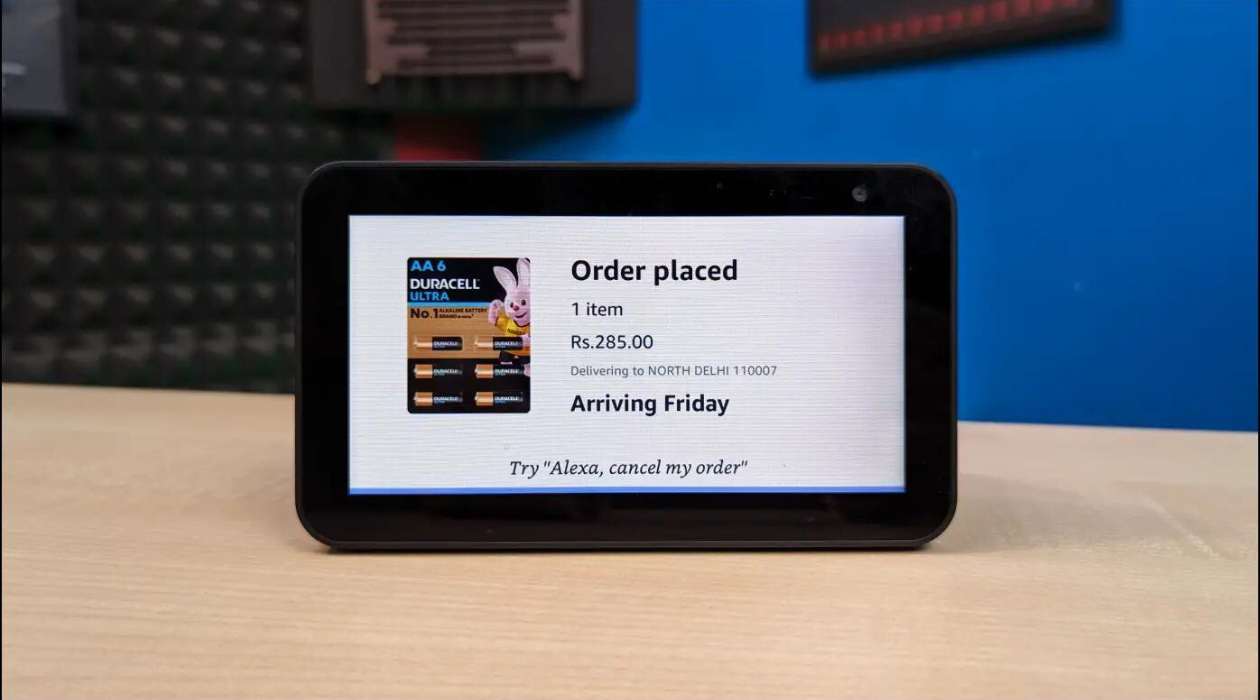Home>Renovation & DIY>Home Renovation Guides>How To Organize Customer Orders


Home Renovation Guides
How To Organize Customer Orders
Published: March 2, 2024
Learn how to efficiently organize customer orders with our comprehensive home renovation guides. Streamline your process and improve customer satisfaction.
(Many of the links in this article redirect to a specific reviewed product. Your purchase of these products through affiliate links helps to generate commission for Storables.com, at no extra cost. Learn more)
Introduction
Organizing customer orders is a crucial aspect of running a successful business, whether you're a small online retailer or a large-scale manufacturer. Efficiently managing customer orders not only ensures customer satisfaction but also contributes to the overall smooth operation of your business. In this article, we will explore the essential steps and strategies to effectively organize customer orders, from understanding the nature of customer orders to implementing a streamlined order management system. Whether you're just starting or looking to optimize your existing processes, these insights will help you enhance your order management capabilities and take your business to the next level.
Key Takeaways:
- Understand customer orders to meet their needs and preferences, leading to improved satisfaction and loyalty. Tailor processes to handle varying order complexities and communication channels effectively.
- Implement a robust order management system and streamlined order processing workflows to enhance efficiency, minimize errors, and provide exceptional customer experiences.
Understanding Customer Orders
Customer orders are the lifeblood of any business. Understanding the nature of customer orders is essential for effective organization and management. Each customer order represents a unique set of requirements, preferences, and expectations. Whether it's a product purchase, a service request, or a custom order, every customer order holds significance in fulfilling the needs of your clientele. By comprehending the diverse nature of customer orders, businesses can tailor their processes to meet specific demands, leading to improved customer satisfaction and loyalty.
-
Customer Preferences: Every customer has their own preferences when it comes to placing orders. Some may prefer online ordering, while others may opt for in-person or phone orders. Understanding these preferences allows businesses to provide a seamless ordering experience, catering to the diverse needs of their customer base.
-
Order Complexity: Customer orders can vary significantly in complexity. From simple, single-item purchases to complex, multi-product orders, businesses need to be equipped to handle diverse order types efficiently. By recognizing the varying levels of complexity, businesses can streamline their order processing workflows and allocate resources effectively.
-
Timeliness and Expectations: Customers often have specific expectations regarding the timeliness of their orders. Whether it's a standard delivery, expedited shipping, or a customized production timeline, businesses must grasp the time-sensitive nature of customer orders. Meeting or exceeding these expectations can significantly impact customer satisfaction and retention.
-
Communication Channels: Understanding the preferred communication channels of customers is crucial in managing orders effectively. Whether it's email, phone calls, live chat, or mobile apps, businesses need to align their order management processes with the communication channels that resonate with their customers.
By gaining a comprehensive understanding of customer orders, businesses can tailor their approach to order organization and management, ultimately enhancing the overall customer experience and driving business growth.
Setting Up Order Management System
Setting up a robust order management system is pivotal in ensuring the smooth processing and organization of customer orders. Here are the key steps to establish an effective order management system:
-
Selecting the Right Software: Choose a suitable order management software that aligns with the specific needs of your business. Look for features such as order tracking, inventory management, and integration capabilities with other business systems.
-
Centralizing Order Information: Consolidate all order-related data into a centralized system. This includes customer details, order history, payment information, and shipping preferences. Centralization facilitates easy access to critical information, enabling efficient order processing.
-
Automating Order Entry: Implement automated order entry processes to minimize manual data entry errors and streamline order processing. This can involve integrating your order management system with your e-commerce platform or utilizing electronic data interchange (EDI) for seamless order transmission.
-
Integrating Inventory Management: Integrate your order management system with inventory management to maintain accurate stock levels and prevent overselling. Real-time synchronization between orders and inventory helps in fulfilling orders promptly.
-
Customizing Order Workflows: Tailor order processing workflows to match the specific requirements of your business. Define clear steps for order validation, payment processing, and fulfillment, ensuring a standardized approach to handling customer orders.
-
Implementing Security Measures: Prioritize data security by implementing robust measures to safeguard customer information and payment data. This includes encryption protocols, secure payment gateways, and adherence to industry standards for data protection.
-
Training Staff: Provide comprehensive training to your staff on using the order management system effectively. Ensure they are proficient in navigating the system, processing orders, and resolving any issues that may arise during the order fulfillment process.
By setting up a well-structured order management system, businesses can streamline their order processing operations, minimize errors, and enhance overall efficiency in managing customer orders.
Creating Order Processing Workflow
Creating a well-defined order processing workflow is essential for ensuring the seamless handling of customer orders from initiation to fulfillment. Here's a detailed breakdown of the steps involved in creating an effective order processing workflow:
-
Order Entry and Validation: The workflow begins with the entry of customer orders into the system. Upon entry, orders undergo a validation process to ensure that all necessary details, such as product specifications, quantities, and customer information, are accurate and complete.
-
Payment Processing: Once orders are validated, the next step involves processing payments. This may include verifying payment methods, authorizing transactions, and capturing funds. Integration with secure payment gateways and financial systems is crucial for efficient payment processing.
-
Order Fulfillment Planning: After successful payment processing, the workflow moves into the planning phase for order fulfillment. This includes determining inventory availability, scheduling production (if applicable), and allocating resources for packaging and shipping.
-
Inventory Check and Allocation: In this step, the system checks the availability of the ordered items in the inventory. If the items are in stock, they are allocated for the respective orders. If certain items are out of stock, backorder management or alternative fulfillment options are considered.
-
Order Packaging and Labeling: Once the items are allocated, the workflow progresses to the packaging and labeling stage. Packaging requirements, such as protective materials, branding elements, and shipping labels, are addressed to prepare the orders for shipment.
-
Shipping and Delivery Coordination: This step involves coordinating with shipping carriers or logistics partners to arrange for the pickup or delivery of the packaged orders. Generating shipping labels, tracking numbers, and communicating delivery timelines to customers are integral parts of this phase.
-
Order Confirmation and Communication: Upon shipment, customers are notified of the order status and provided with tracking information. This communication ensures transparency and keeps customers informed about the progress of their orders.
-
Post-Delivery Follow-Up: After the orders are delivered, the workflow may include post-delivery activities such as customer feedback collection, post-purchase support, and handling any returns or exchanges if necessary.
By creating a structured order processing workflow, businesses can streamline their operations, reduce processing times, and enhance the overall customer experience. This systematic approach also allows for better monitoring and optimization of the order fulfillment process.
Use a digital order management system to keep track of customer orders, set up a clear filing system for paper orders, and establish a regular schedule for organizing and processing orders.
Managing Order Fulfillment
Managing order fulfillment encompasses the critical processes involved in ensuring that customer orders are accurately picked, packed, and delivered in a timely manner. Here's an in-depth look at the key aspects of managing order fulfillment:
-
Efficient Order Processing: Upon receiving customer orders, the order fulfillment process kicks off with efficient order processing. This involves systematically reviewing the orders, verifying product availability, and preparing them for the subsequent fulfillment stages.
-
Picking and Packing: The next step involves picking the items from the inventory based on the order details and packing them securely for shipment. Utilizing efficient picking methods, such as batch picking or zone picking, can optimize the speed and accuracy of this process.
-
Quality Control: Implementing quality control measures is crucial to ensure that the picked items match the order specifications and are in pristine condition. Quality checks help in preventing errors and maintaining high standards of order accuracy.
-
Shipping Method Selection: Choosing the appropriate shipping methods based on customer preferences, delivery timelines, and cost considerations is an integral part of order fulfillment management. Whether it's standard shipping, expedited delivery, or specialized shipping services, the selection should align with customer expectations.
-
Shipment Tracking and Visibility: Providing customers with shipment tracking details and ensuring visibility into the delivery process is essential for a positive customer experience. Integration with shipping carriers' tracking systems enables real-time tracking updates for customers.
-
Addressing Special Requirements: Some orders may have special requirements, such as gift wrapping, personalized messages, or specific delivery instructions. Managing these special requests accurately adds a personalized touch to the order fulfillment process.
-
Optimizing Packaging and Shipping Costs: Efficiently managing packaging materials and optimizing shipping costs contributes to cost-effective order fulfillment. Utilizing sustainable packaging options and negotiating favorable shipping rates with carriers can lead to cost savings.
-
Returns and Exchanges Handling: In the event of returns or exchanges, having a well-defined process for managing reverse logistics is crucial. Streamlining the returns process and promptly addressing exchange requests contribute to overall customer satisfaction.
-
Performance Monitoring and Optimization: Regularly monitoring key performance indicators (KPIs) related to order fulfillment, such as order cycle time, order accuracy, and on-time delivery, allows businesses to identify areas for improvement and optimize their fulfillment processes.
By effectively managing the order fulfillment process, businesses can uphold their commitment to delivering exceptional customer experiences while maintaining operational efficiency and cost-effectiveness. This comprehensive approach to order fulfillment management forms the backbone of a successful and customer-centric business operation.
Handling Order Returns and Exchanges
Handling order returns and exchanges is a crucial aspect of customer-centric order management. Businesses need to establish clear and efficient processes to address customer requests for returns, exchanges, or refunds. Here's a detailed breakdown of the key considerations in handling order returns and exchanges:
-
Establishing Return Policies: Begin by defining clear and transparent return policies that outline the conditions under which customers can initiate returns or exchanges. This includes specifying the timeframe for returns, acceptable reasons for returns, and any requirements for the condition of the returned items.
-
Streamlining Return Authorization: Implement a streamlined process for customers to request return authorizations. This may involve providing a dedicated portal on the business website, enabling customers to initiate return requests, and automatically generating return labels or authorizations.
-
Automating Return Label Generation: Utilize order management systems that can automate the generation of return shipping labels. This simplifies the return process for customers and expedites the return shipping logistics.
-
Inspecting Returned Items: Upon receiving returned items, conduct thorough inspections to ensure that the items meet the specified return conditions. This includes checking for damage, verifying the presence of original packaging and accessories, and assessing the eligibility for refunds or exchanges.
-
Refund Processing: Establish efficient procedures for processing refunds for returned items. This involves verifying the eligibility of the return, initiating the refund transaction, and communicating the refund status to the customer.
-
Expedited Exchange Processes: For customers requesting exchanges, prioritize expedited processes to ensure timely replacement of items. This may involve preemptively shipping replacement items upon receiving exchange requests to minimize customer wait times.
-
Managing Return Shipping Logistics: Effectively manage the logistics of return shipments, including coordinating with shipping carriers for return pickups, tracking return shipments, and ensuring the prompt receipt of returned items.
-
Post-Return Customer Communication: Maintain open communication with customers throughout the return and exchange processes. Providing updates on the status of return inspections, refund processing, or exchange shipments fosters trust and transparency.
-
Analyzing Return Data: Regularly analyze data related to returns and exchanges to identify trends, common reasons for returns, and areas for improvement. This data-driven approach can help in refining return policies and addressing recurring issues.
-
Continuous Improvement: Continuously seek feedback from customers who initiate returns or exchanges to understand their experiences. Use this feedback to refine return processes, enhance product descriptions to minimize returns, and improve overall customer satisfaction.
By effectively handling order returns and exchanges, businesses can demonstrate their commitment to customer satisfaction, build trust, and turn potentially negative experiences into opportunities to exceed customer expectations. A well-managed return and exchange process contributes to a positive brand image and fosters long-term customer loyalty.
Implementing Customer Order Tracking
Implementing a robust customer order tracking system is instrumental in providing transparency and visibility into the status of orders, thereby enhancing the overall customer experience. Here's a comprehensive guide to implementing an effective customer order tracking process:
-
Real-time Order Status Updates: Integrate order tracking capabilities into your customer-facing platforms, such as e-commerce websites or mobile apps, to provide real-time updates on order status. Customers should be able to easily access information regarding order processing, shipment, and delivery.
-
Order Tracking Notifications: Implement automated order tracking notifications to keep customers informed about significant order milestones. This can include order confirmation, shipment dispatch, estimated delivery dates, and delivery confirmation. Utilize email or SMS notifications to ensure timely communication.
-
Customizable Tracking Portals: Provide customers with personalized tracking portals where they can view the status of their orders, track shipments, and access relevant details such as tracking numbers, carrier information, and expected delivery times. Customizable tracking portals enhance the customer's sense of control over their orders.
-
Multi-channel Tracking Integration: Ensure that the order tracking system is seamlessly integrated across multiple shipping carriers and logistics partners. This integration allows customers to track orders regardless of the shipping provider, consolidating tracking information into a single, easily accessible interface.
-
Customer Support Integration: Integrate order tracking information into your customer support systems, enabling support agents to provide accurate and up-to-date order status information when addressing customer inquiries. This ensures consistency in the information provided to customers across all touchpoints.
-
Interactive Tracking Features: Implement interactive tracking features that allow customers to take proactive actions, such as requesting delivery rescheduling, providing delivery instructions, or initiating returns directly from the tracking interface. Interactive features empower customers to manage their orders effectively.
-
Order Tracking Analytics: Utilize order tracking data to analyze the efficiency of the delivery process, identify potential bottlenecks, and optimize delivery timelines. Insights from order tracking analytics can inform strategic decisions to improve overall delivery performance.
-
Post-delivery Feedback Collection: Integrate post-delivery feedback collection mechanisms within the order tracking interface. This allows customers to provide feedback on their delivery experience, enabling businesses to gather valuable insights and address any issues promptly.
-
Transparency and Trust: Emphasize transparency in the order tracking process to build trust with customers. Clearly communicate the steps involved in the order fulfillment and delivery process, setting realistic expectations regarding delivery times and potential delays.
-
Continuous Improvement: Continuously gather customer feedback on the order tracking experience and use it to refine the tracking interface, address common pain points, and enhance overall usability. Iterative improvements based on customer input contribute to a more user-friendly tracking experience.
By implementing a comprehensive customer order tracking system, businesses can empower customers with visibility and control over their orders, leading to heightened satisfaction, reduced support inquiries, and an overall positive impact on the customer journey. A well-executed order tracking process reinforces the commitment to customer-centric operations and fosters long-term customer loyalty.
Conclusion
Efficiently organizing customer orders is a fundamental aspect of business operations, directly impacting customer satisfaction and overall business performance. By understanding the diverse nature of customer orders, setting up a robust order management system, creating streamlined order processing workflows, and effectively managing order fulfillment, businesses can elevate their order management capabilities. Additionally, handling order returns and exchanges with transparency and implementing a comprehensive customer order tracking system further enhances the customer experience.
The successful organization of customer orders not only contributes to customer satisfaction but also fosters trust, loyalty, and positive brand perception. By prioritizing the implementation of best practices in order management, businesses can position themselves for sustained growth and success in today's competitive market landscape. Embracing a customer-centric approach to order organization and management is pivotal in building lasting relationships with customers and driving business excellence.
Frequently Asked Questions about How To Organize Customer Orders
Was this page helpful?
At Storables.com, we guarantee accurate and reliable information. Our content, validated by Expert Board Contributors, is crafted following stringent Editorial Policies. We're committed to providing you with well-researched, expert-backed insights for all your informational needs.















0 thoughts on “How To Organize Customer Orders”